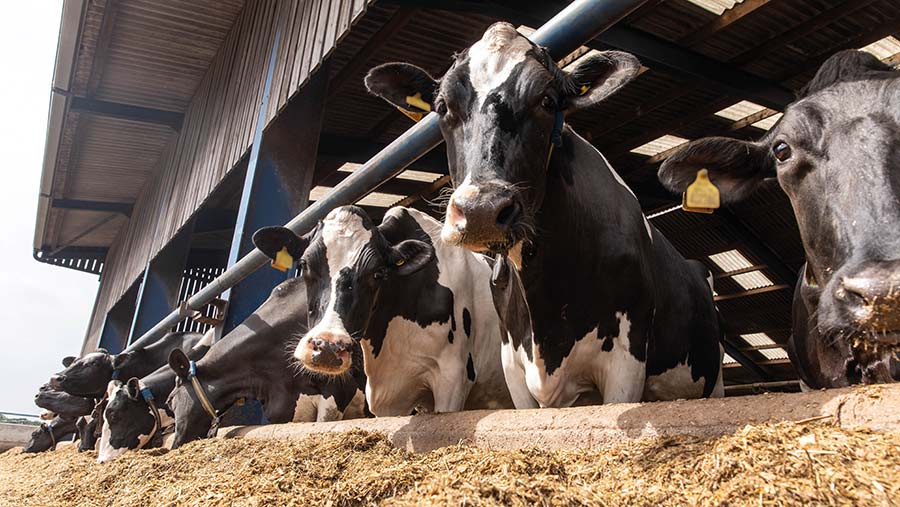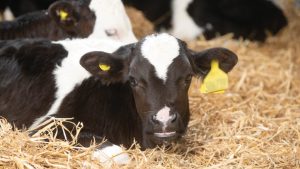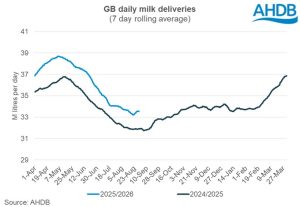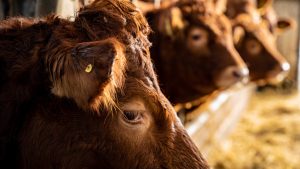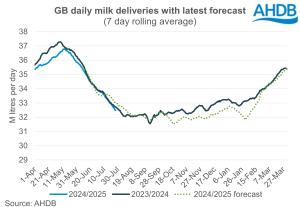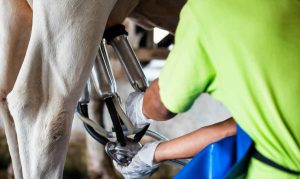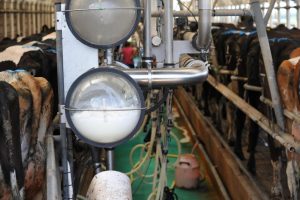
Using the whole-farm feed efficiency (WFFE) ratio, a survey of 194 farms found that the lowest efficiency ratio was just 0.5, while the highest was 1.5.
WFFE compares milk output against all feed for all stock. That means the measure gives a more accurate reflection of the farm’s productive efficiency, according to the university’s professor of dairy science, Phil Garnsworthy.
“This is important because for every 0.1 increase in WFFE score, farms on the survey made £233 extra gross margin a hectare,” says Prof Garnsworthy.
There is, therefore, a huge need for many farms to boost milk output from each hectare and take simple steps to get more from feed, he adds.
Whole-farm feed efficiency equation
WFFE =
Energy corrected milk (kg) produced on the farm
divided by
All feed for All dairy animals (kg dry matter)
How to improve WFEE
Researchers have suggested a range of practical tips to help improve WFFE on dairy units.
1. Improve grass and forage quality
The first thing to review is grazing and forage management to improve quality. Younger, leafier grass and better silage boost milk output directly.
At grass, mob- or strip-grazing will improve quality and limit waste, while frequent and early silage cuts will lift crude protein and D-value. A strategic approach to reseeding will help maintain sward quality.
2. Reduce forage wastage
Improving clamp management with rapid filling and effective compaction, along with good sheeting practice, will help reduce waste.
Once opened, a cutter rather than a grab should be used to minimise spoilage at the silage face.
Wastage at feeding will have a direct impact on WFFE. Silage should be pushed up to cows frequently and spillages from the mixer wagon avoided.
3. Increase stocking rate and milk yield a cow
Surveyed farms with very low stocking rates had lower efficiency scores. But above one livestock unit a hectare (LU/ha) the gain in efficiency slowed.
There was also a limit to benefits associated with increased milk yield on some farms. Higher yields of 10,000-15,000 litres a lactation can support the most feed-efficient farms.
But the research showed some high-yielding herds had lower than expected WFFE scores. This was caused by health challenges such as lameness and herd fertility, which increased replacement rates.
The result was extra feed spent on rearing heifers to first calving.
4. Maximise fertility and health to reduce animal wastage
Culling for reasons other than herd improvement is a tremendous waste because cows don’t make a profit until the second lactation offsets the cost of rearing.
The UK average replacement rate is 33%, so cows are lasting just three lactations. The target commonly suggested is 25%, but it would be better to strive for 20%, keeping cows for five lactations.
With greater longevity, culling can be based on improving genetics and milk yields.
5. Manage youngstock to reach age and weight targets
Many farms pay less attention to calf and replacement heifer nutrition. It is here, however, where feed efficiency can be improved significantly.
Farms should aim to offer milkers 5-10% more feed than the predicted intake to ensure cows don’t go hungry. The excess can then be recycled to replacement heifers.
Some recycling is positive for feed efficiency because it reduces waste. But it must be good quality to boost heifer growth rates and not just inedible sweepings.
Faster heifer growth rates mean replacements reach target weights for first calving date sooner – about 85% of the average mature weight of the herd.
First calving at 23-24 months requires an even growth rate of 0.7kg/day from the outset. However, the UK average is 27 months, which means most farms are wasting feed on unproductive heifers for three to four months.
